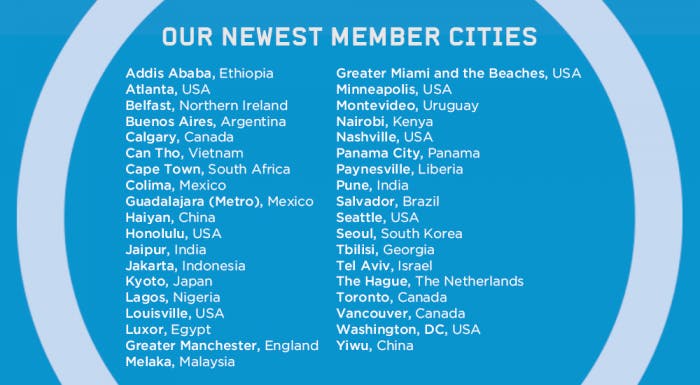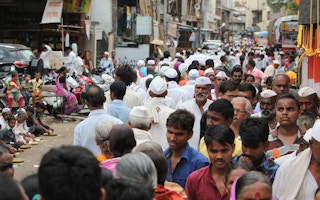In the 21st century, urban cities face intertwined pressures of rapid urbanisation, globalisation and climate change.
As epicentres for economic activities, urban cities face the twin dilemma of massive population concentration and the rapid depletion of natural resources. These make them most vulnerable to the impacts of sudden and shocking natural disasters such as floods, typhoons, or severe drought; as well as long-term stresses such as sea level rise.
The 100 Resilient Cities (100 RC) is a global initiative pioneered by The Rockefeller Foundation to build urban resilience, which is the capability of individuals, communities, institutions, businesses and systems within a city to survive, adapt and grow no matter what kind of environmental, social, or economic challenges they face.
100 RC announced last week that 37 new cities have qualified to join the network, bringing the number of the world’s resilient cities to 100 – a goal the initiative set out to achieve when it was incepted three years ago.
The new members, which span five continents in the world, include Asian cities such as Pune and Jaipur in India, Malacca in Malaysia, the Indonesian capital Jakarta, Kyoto in Japan, Chan Tho in Vietnam and the Chinese cities of Haiyan and Yiwu.
As members of the 100 RC network, urban cities will receive a grant funding of more than US$200 million.
“
The threshold of success for 100 RC will not solely be progress within our network of 100 cities. Instead, it will be the ability for solutions to scale, and for all cities around the world to build off of the innovative work leveraged by these 100 Resilient Cities through implementation of their Resilience Strategies.
Michael Berkowitz, president, 100 RC
The grant funding comes from the 100 RC’s partners such as Swiss Re, Microsoft, the World Bank and the International Rescue Committee, which provides critical tools, services, and technical assistance to member cities.
Every 100 RC city will need to hire a City Resilience Officer (CRO), who will work at the municipal level to strategise resilience building for the city. The CRO will also tap vital resources from external sources such as governments, aid institutions, private partners and NGOs.
Within the network, urban cities will also learn from other members’ real-life strategies and best practices in resilience building.
From Nairobi to Washington, DC, the new member cities include those which are most vulnerable to floods, droughts, earthquakes and at risk of man-made threats such as disease epidemic, cybersecurity attacks and war.

Source: 100resilientcities.org
Dr Judith Rodin, President of The Rockefeller Foundation, said “The 100 Resilient Cities Network is showing the global community a new way of coping with shared, complex challenges – building urban resilience.
“Incorporating resilience planning and principles not only prepares cities for disasters and long-term threats, but also improves everyday living standards for all members of an urban community. The geographical, political and cultural diversity in the now-complete 100 RC network demonstrates that when it comes to dealing with this century’s toughest challenges, resilience planning is essential.”
Cities that qualified to become members of the 100 RC network passed through three challenge processes and were chosen from 1,000 applications which the network received and evaluated over the course of three years.
Those chosen were cities whose mayors demonstrated commitment to building resilience by proactively planning for long-term pressures such as sea-level rise, and at the same time, shown prowess in effectively implementing disaster response and mitigation.
Now that the 100 RC has fulfilled its quota, what next? 100 RC President Michael Berkowitz said the work had only just begun.
“We are proud today to celebrate the fulfillment of our initial commitment to reach 100 cities – but the real work lies ahead. The threshold of success for 100 RC will not solely be progress within our network of 100 cities,” he said.
“Instead, it will be the ability for solutions to scale, and for all cities around the world to build off of the innovative work leveraged by these 100 Resilient Cities through implementation of their Resilience Strategies.”

















